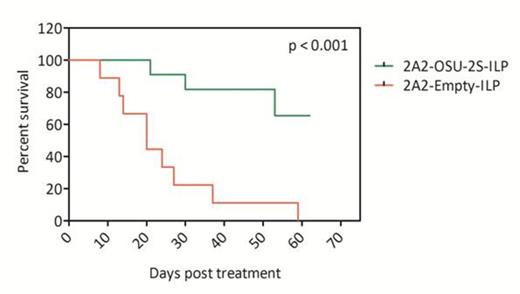Abstract
The discovery of predominantly inactive phosphatases in a variety of cancers and the potential for phosphatase targeted therapy as an alternative to kinase inhibitors especially in situations where the efficacy of the kinase inhibitors are compromised due to resistance mechanisms attributed to mutations and single nucleotide polymorphisms of the drug targets prompted us to evaluate potential activators of phosphatases in chronic lymphocytic leukemia (CLL) and other B cell malignancies. We have recently identified cytotoxic activity of OSU-2S, a novel non-immunosuppressive FTY720 derivative and PP2A activator against CLL. OSU-2S induced cytotoxicity was associated with PKC dependent phosphorylation of Serine 591 (S591) of tumor suppressor phosphatase SHP1 and its nuclear translocation consistent with a potential role for S591 phosphorylation. Here in, we demonstrate the molecular mechanisms and a rational approach for developing this novel agent for preclinical and clinical studies. In-vitro kinase assay demonstrated OSU-2S increased activity of purified PKC directly (p<0.0001) and also in CLL-B cells (N=5; p<0.05). Further, OSU-2S induced phospho SHP1S591 is inversely correlated with viability in CLL-B cells (N=20; rs= -0.64; p=0.0026). To elucidate the role of nuclear phospho SHP1S591, we performed gene expression studies by microarray analysis of RNA isolated from OSU-2S treated CLL cells revealing at least 260 genes that have changed by two fold (p<0.0005). Ingenuity pathway analysis (IPA) of the top 40 genes included some of B cell receptor (BCR) signaling candidates such as PI3Kγ, PLCγ, MAP2K6. Consistent with this, OSU-2S treatment reduced BCR activation of CLL cells stimulated with goat F(ab’)2 against human IgA+IgG+IgM (H+L), as identified with reduced activation and viability. Moreover, with relevant to CLL disease Tcl1A expression that was identified to be down regulated in response to OSU-2S in the gene expression profile was independently confirmed to be significantly down regulated both at the mRNA (N=7; p=0.0159) and protein levels with the corresponding up regulation in cFOS and FRA2 two known inhibitory targets of Tcl1A. To overcome the limitations associated with non specific activity on unintended target cells and normal counterparts, we made OSU-2S immunoliposome (2A2-OSU-2S-ILP) formulation targeting malignant B cell specific tumor antigen receptor tyrosine kinase-like orphan receptor (ROR1). ROR1 is an orphan receptor tyrosine kinase that is expressed exclusively in malignant B but not normal B cells. We have used a non-cytotoxic anti-ROR1 monoclonal antibody 2A2 to formulate immunoliposome 2A2-ILP which showed selective binding and internalization in ROR1+ CLL B cells but not ROR1- normal B cells from healthy donors. To demonstrate the chemotherapeutic efficiency in a more relevant CLL model in-vivo, we have generated Eµ-hROR1 transgenic mouse which expresses B cell specific human ROR1. Crossing the Eµ-hROR1 mouse with Eµ-Tcl1 CLL mouse resulted in generation of Eµ-hROR1-Tcl1 mouse that exhibit CLL like disease with human ROR1 antigen in leukemic CD19+CD5+ B cells. Ex-vivostudies using CLL primary B cells or Eµ-hROR1-Tcl1 double transgenic mouse B cells showed selective toxicity of leukemic B cells by 2A2-OSU-2S-ILP compared to 2A2-Empty-ILP which does not have OSU-2S. Further, administration of 2A2-OSU-2S-ILP in Eμ-hROR1 transgenic mice resulted in selective depletion of ROR1 positive B cells and prolonged survival in Eµ-hROR1-Tcl1 spleen engrafted mouse model of CLL (N=11 for 2A2-OSU-2S-ILP and N=9 for 2A2-Empty-ILP; p<0.001). The novel OSU-2S, its delivery formulation, and the mouse models described here provide the tools for further development of OSU-2S formulations for B cell malignancies.
Disclosures:
No relevant conflicts of interest to declare.
Author notes
*
Asterisk with author names denotes non-ASH members.
© 2013 by The American Society of Hematology
2013


